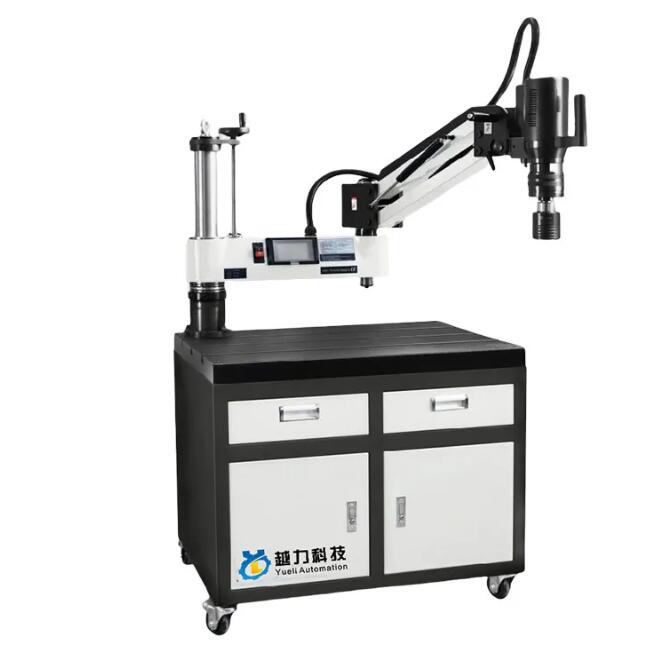How to Maximize Efficiency with Electric Tapping Machines Lifting Models
2024-09-10
In today’s fast-paced manufacturing world, maximizing efficiency is key to staying competitive. One of the most innovative tools helping industries achieve this is the Electric Tapping Machine with a Lifting Model. By combining motorized tapping with an adjustable height feature, this machine offers unparalleled flexibility and productivity. But to fully harness its capabilities, it’s essential to understand how to operate and maintain it effectively. In this blog, we’ll explore tips and best practices for getting the most out of your electric tapping machine lifting model.
Understanding the Core Functionality
Before diving into optimization tips, it’s crucial to understand the core functionality of an electric tapping machine lifting model. The machine operates using an electric motor that drives the tapping tool into a pre-drilled hole, creating internal threads. What sets the lifting model apart is its ability to adjust the height of the tapping head, making it versatile for use on different-sized workpieces. By efficiently using this feature, you can save time and reduce physical strain during production.
Tips for Maximizing Efficiency
1. Optimize the Workstation Layout:
To maximize efficiency, make sure that the tapping machine is strategically positioned within your workstation. Ensure that workpieces are easy to move in and out of the machine, and that tools and materials are within reach. Consider using jigs or fixtures to streamline part placement, reducing setup time between operations.
2. Use the Lifting Feature for Better Ergonomics:
One of the primary advantages of the lifting model is that it allows for easy height adjustment. Use this to your benefit by positioning the tapping head at the optimal working height for each job. This not only improves efficiency but also reduces operator fatigue, allowing for longer work sessions with less strain.
3. Choose the Right Tapping Speed and Torque Settings:
Modern electric tapping machines offer adjustable speed and torque settings, which are critical for achieving high-quality results. For softer materials like aluminum or plastic, you can use higher speeds to increase productivity. For harder materials like steel, lower speeds and higher torque are necessary to avoid damage to the taps and workpiece. Properly calibrating these settings will extend the lifespan of your taps and ensure precision.
4. Utilize Depth Control for Consistency:
Many electric tapping machines are equipped with depth control mechanisms. This ensures that each hole is tapped to the exact depth required, preventing over- or under-tapping, which could compromise the quality of the threads. Set the depth control according to the specifications of your workpiece to maintain consistency across production runs.
5. Invest in Quality Taps:
The quality of your taps plays a crucial role in the efficiency of the tapping process. High-quality taps not only last longer but also produce cleaner, more accurate threads. Invest in taps that are appropriate for the material you are working with, whether it’s high-speed steel, carbide, or other specialized coatings for difficult-to-machine materials.
6. Regular Maintenance and Lubrication:
Like any industrial machine, regular maintenance is essential for ensuring long-term performance. Keep the moving parts of the lifting arm lubricated to prevent wear and tear. Periodically check the motor, tapping head, and safety systems to ensure everything is working smoothly. Regularly replacing worn taps and parts will minimize downtime and ensure consistent tapping performance.
Troubleshooting Common Issues
While electric tapping machines with lifting models are reliable and efficient, some common issues can arise if not properly operated or maintained. Here’s how to address a few typical problems:
1. Taps Breaking or Jamming:
This is often caused by incorrect torque settings or dull taps. Make sure to use the correct torque for the material you’re working with, and replace taps regularly to avoid breakage. Additionally, using appropriate cutting fluid can reduce friction and extend tap life.
2. Inconsistent Thread Depth:
If threads are not consistent in depth, the depth control settings may not be properly calibrated. Recheck the settings and ensure the lifting arm is moving smoothly without obstruction.
3. Machine Overheating:
Overheating can be a sign of overloading the motor or using inappropriate tapping speeds. Check your settings and ensure that the machine has proper ventilation to avoid motor burnout.
4. Misalignment of Threads:
Misaligned threads can result from incorrect workpiece positioning. Always ensure that the workpiece is securely clamped or held in place before starting the tapping process. Using a fixture or jig can help keep the workpiece steady.
Advanced Features to Leverage
Many electric tapping machines with lifting models come with advanced features designed to further enhance efficiency:
- Automatic Reversing Function: This feature automatically reverses the tap out of the hole after threading, saving time and ensuring a clean thread without operator intervention.
- Multi-axis Tapping: Some machines allow for tapping in multiple orientations, such as horizontal or vertical, without needing to reposition the workpiece, speeding up the process for complex parts.
- Safety Mechanisms: Look for models with built-in overload protection and emergency stop buttons to enhance safety and prevent damage to the machine or workpiece.
Conclusion
The Electric Tapping Machine with a Lifting Model is a powerful tool that can significantly boost productivity in any manufacturing environment. By understanding its features, optimizing its use, and following maintenance best practices, operators can achieve maximum efficiency and maintain high-quality results. Whether you are tapping threads in small electronic components or large industrial parts, the versatility and precision of this machine make it a valuable asset in modern manufacturing.



